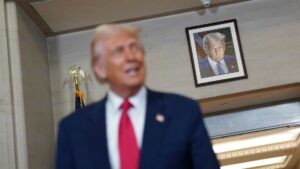Understanding the Current Economic Climate: Trump, Interest Rates, and Tariff Policies
As the economic landscape continues to shift, it is crucial to stay informed about the latest developments that can impact our financial future. At Extreme Investor Network, we dive deep into the heart of economic matters that matter to you, providing unique insights and analyses that empower our readers to make informed decisions.
A Look at Trump’s Influence on Federal Reserve Policy
In recent months, U.S. President Donald Trump has made headlines with his increased involvement in Federal Reserve policy, a striking shift from the initially hands-off approach he took when entering office. Currently, Trump is advocating for the Federal Reserve to cut interest rates in response to his administration’s aggressive trade policies, particularly as a counterbalance to the proposed tariffs that aim to recalibrate America’s trade position globally.
On March 13, 2025, during a meeting with NATO Secretary General Mark Rutte, Trump took to Truth Social with a clarion call to the Fed, stating, “The Fed would be MUCH better off CUTTING RATES as U.S. Tariffs start to transition (ease!) their way into the economy." His declaration of April 2nd as "Liberation Day in America" underscores his optimism about upcoming policy shifts.
The Federal Reserve’s Stance
This push comes at a time when the Federal Open Market Committee, led by Chair Jerome Powell, chose to maintain the current interest rate while signaling the possibility of future reductions by the year’s end. Analysts are cautiously forecasting that the Fed might enact two quarter-point cuts, but what does this mean for the average American?
Powell has repeatedly highlighted the uncertain ramifications of tariffs, which may initially spur inflation but are expected to stabilize over time. This cautious approach from the Fed reflects their commitment to navigating a complex economic terrain and underscores the unpredictable nature of the current economic climate.
Implications of Lower Interest Rates
While cutting interest rates can create short-term relief for borrowers by lowering monthly payments, it also poses the risk of compounded inflation, particularly when coupled with tariffs. As the markets anticipate a Fed rate cut by June, the true impact on borrowing costs remains to be seen. Though the ideal scenario would see lower rates bolster the economy without accelerating inflation, history suggests that this relationship is anything but straightforward.
At Extreme Investor Network, we understand the nuances of these economic dynamics. When the Fed cuts rates, it may not always translate directly into lower borrowing rates for consumers. Fixed rate mortgages, for example, might not adjust immediately, leaving many households facing financial constraints.
The Bigger Picture: Long-Term Economic Outcomes
Trump’s previous term saw him openly criticizing the Fed for rate hikes, labeling Chair Powell as a ‘bonehead’ at one point. This led to an increasingly strained relationship between the executive branch and the Federal Reserve. However, his recent focus seems to pivot toward influencing the long-term 10-year Treasury yield rather than the short-term funds rate that the Fed directly manipulates.
Currently, economists predict a potential reduction of a full percentage point in the funds rate over the next three years, with the target presently hovering between 4.25% and 4.5%. This highlights a broader economic trend towards accommodating policies, but as we all know, economic forecasting can often lead to a tumultuous ride.
Conclusion: Staying Ahead in a Dynamic Economy
As we navigate through these changing economic tides, the importance of being well-informed cannot be understated. At Extreme Investor Network, our mission is to provide you with not only the latest updates but also the context and analysis necessary to understand how these developments affect your investments and financial decisions.
Don’t miss out on our expert forecasts and strategic insights to equip yourself for what lies ahead in the economy. Join us as we dig deeper into the intricacies of interest rates, tariffs, and the ongoing evolution of our economic landscape. Stay informed, stay empowered!

